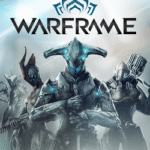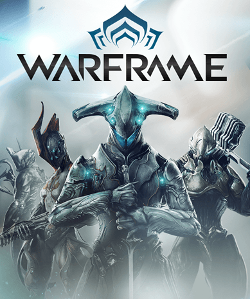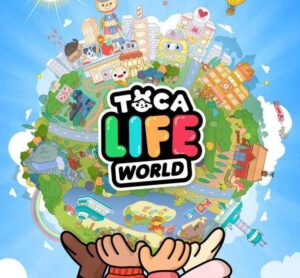From Rapture to Pandora: The Creative Force Behind Wartorn and Its Genre-Bending Ambition
Popular Now
 Fall Guys
Fall Guys
 Genshin Impact
Genshin Impact
 Valorant
Valorant
 FIFA 23
FIFA 23
 Poppy Playtime
Poppy Playtime
 Warframe
Warframe
 Fortnite
Fortnite
 Free Fire
Free Fire
 Rust
Rust
 Candy Crush Saga
Candy Crush Saga 
The name Paul Hellquist carries significant weight in the video game industry. As the lead designer on the groundbreaking BioShock and the game design director on the wildly successful Borderlands 2, his legacy is one of innovation and creative excellence. Now, Hellquist is bringing his unique vision to a new project as the co-founder and chief creative officer of Stray Kite Studios. The studio’s debut title, Wartorn, is not another first-person shooter, but a “real-time tactics roguelite” that blends elements of strategy, action, and a deep narrative. In a recent interview, Hellquist reflected on his past work and explained how those experiences influenced the design of Wartorn, a game that is poised to carve out a new niche in the crowded roguelike genre.
Wartorn, which entered Early Access on June 17, 2025, has already garnered a “Very Positive” reception on Steam, with players praising its unique “painterly” art style and complex tactical gameplay. The game is a single-player, squad-based adventure that follows two elven sisters, Yara and Elani, as they fight to reunite their family in a war-torn fantasy world. The narrative is a central part of the experience, with players having to make tough moral decisions that impact the story and the fate of their caravan. This focus on a strong narrative, which was a hallmark of Hellquist’s work on BioShock, is a key distinguishing feature of the game.
During the interview, Hellquist spoke at length about how his work on BioShock’s systemic combat and narrative design informed the creation of Wartorn. He explained that the team at Stray Kite wanted to create a game that was not only tactically deep but also emotionally resonant. The game’s dynamic combat system, which allows players to harness elemental forces like fire, water, and lightning, is reminiscent of the “Plasmids” from BioShock, where players could combine different powers to create unique and devastating effects. This emphasis on player agency and emergent gameplay is a core tenet of both games, showing a clear throughline in Hellquist’s design philosophy. The goal, he said, was to create a game where every decision, from who you recruit to how you use your abilities, has a meaningful impact on the outcome.
 A New Take on Roguelite Progression and Strategic Combat
A New Take on Roguelite Progression and Strategic Combat
The “roguelite” elements of Wartorn are another area where Hellquist’s past experiences shine through. As the game design director of Borderlands 2, a game famous for its extensive loot and progression systems, Hellquist understands the importance of a rewarding gameplay loop. In Wartorn, the roguelite progression system rewards players for their perseverance, offering “heirlooms, hero upgrades, and new abilities that carry forward with each run.” This system is designed to make every failure feel like a step forward, as players are constantly growing in power and unlocking new tools for their next attempt. This is a crucial element for a roguelite, as it keeps players engaged and motivated even in the face of repeated setbacks. The game’s strategic combat, which combines squad management with physics-based destruction and elemental interactions, is a fresh and exciting take on the genre. The ability to slow down time to issue commands adds a layer of accessibility that makes the complex scenarios manageable for a wide range of players. This feature is a direct result of Hellquist’s desire to make tactical games more accessible without sacrificing depth.
 The interview also touched on the game’s unique “painterly” art style, which gives the game a gorgeous, hand-drawn look. This aesthetic, combined with a rich and compelling narrative, sets Wartorn apart from other titles in the genre. While many roguelites focus solely on gameplay and procedural generation, Wartorn is aiming to be a more complete and emotionally engaging experience. It is a game that not only challenges players tactically but also makes them think deeply about the moral choices they are making. Hellquist’s past work on games that blended genre conventions and prioritized a strong creative vision is clearly on display here. With Wartorn, he and the team at Stray Kite Studios are not just making a new game—they are attempting to create a new kind of game, one that combines the best elements of his past work with a fresh and ambitious new design. The Early Access period is just the beginning, and fans can expect to see more content and refinements as the developers work toward a full 1.0 launch.
The interview also touched on the game’s unique “painterly” art style, which gives the game a gorgeous, hand-drawn look. This aesthetic, combined with a rich and compelling narrative, sets Wartorn apart from other titles in the genre. While many roguelites focus solely on gameplay and procedural generation, Wartorn is aiming to be a more complete and emotionally engaging experience. It is a game that not only challenges players tactically but also makes them think deeply about the moral choices they are making. Hellquist’s past work on games that blended genre conventions and prioritized a strong creative vision is clearly on display here. With Wartorn, he and the team at Stray Kite Studios are not just making a new game—they are attempting to create a new kind of game, one that combines the best elements of his past work with a fresh and ambitious new design. The Early Access period is just the beginning, and fans can expect to see more content and refinements as the developers work toward a full 1.0 launch.








 A New Take on Roguelite Progression and Strategic Combat
A New Take on Roguelite Progression and Strategic Combat